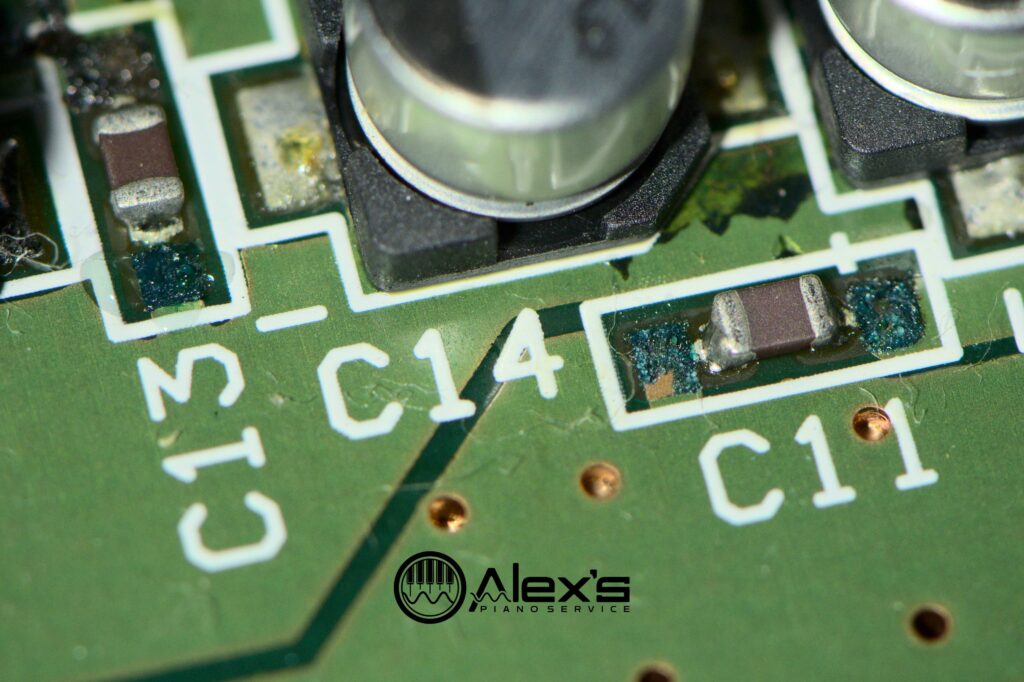My customer first mentioned that her KR-5000 had started “crackling.” By the time I showed up, every output—speakers and headphones alike—was dead, though all the buttons and sliders still behaved.
Diagnosing the KR-5000
I popped a set of headphones into the headphone jack and heard nothing, which let me rule out blown speakers. Additionally, there was no output at the AUX OUT, so the power amp likely wasn’t an issue either.
Next, I played one of the built-in Demo songs; still silence, so the keybed and key-scan circuitry weren’t causing this particular problem. For good measure, I fed a sine wave into the rear AUX IN jack and heard it come through the speakers loud and clear.
With those basics covered, I moved on to the main board. The KR-5000 service manual points you to pins 1 and 2 of CN1 for a quick audio check—those should carry the left and right signals coming straight from the DAC section. I probed them and got flat-line silence. I double-checked the 5V and 15V power rails, and they were fine. So the issue was on the main board, in the DAC section or earlier.
Getting the main board out of a KR-5000 is a bit of a chore, since it’s confined in a large metal bracket. But once it was on the bench the difficulty was obvious: Several surface-mount electrolytic capacitors had leaked, and the dried electrolyte had started chewing through nearby traces, especially around the DAC and output op-amps.
Electrolytes and Corrosion

Corrosion like this is a signature failure in 1990s Roland gear. You can find many discussions such as this one on BapCaps about the KR-3500/KR-4500—the post also recommends a full recap. A full recap, thorough cleaning with IPA and flux remover, and a couple of jumper wires to replace eaten traces brought the keyboard back to life.
If you notice crackling, it might be worth addressing the problem before the rot spreads! It’s much better to address the difficulties when you can still just replace the capacitors. Do not replace only the capacitors that appear to be leaking—replace as many electrolytic capacitors as you’re able, to stave off future challenges.
Neutralize the acid with a touch of white vinegar, and then clean the board with IPA. Corrosion can continue acting even after you clean the board if it’s not neutralized.
I have an article on frequently asked questions about digital pianos and keyboards, if you’d like to learn more about common issues!
